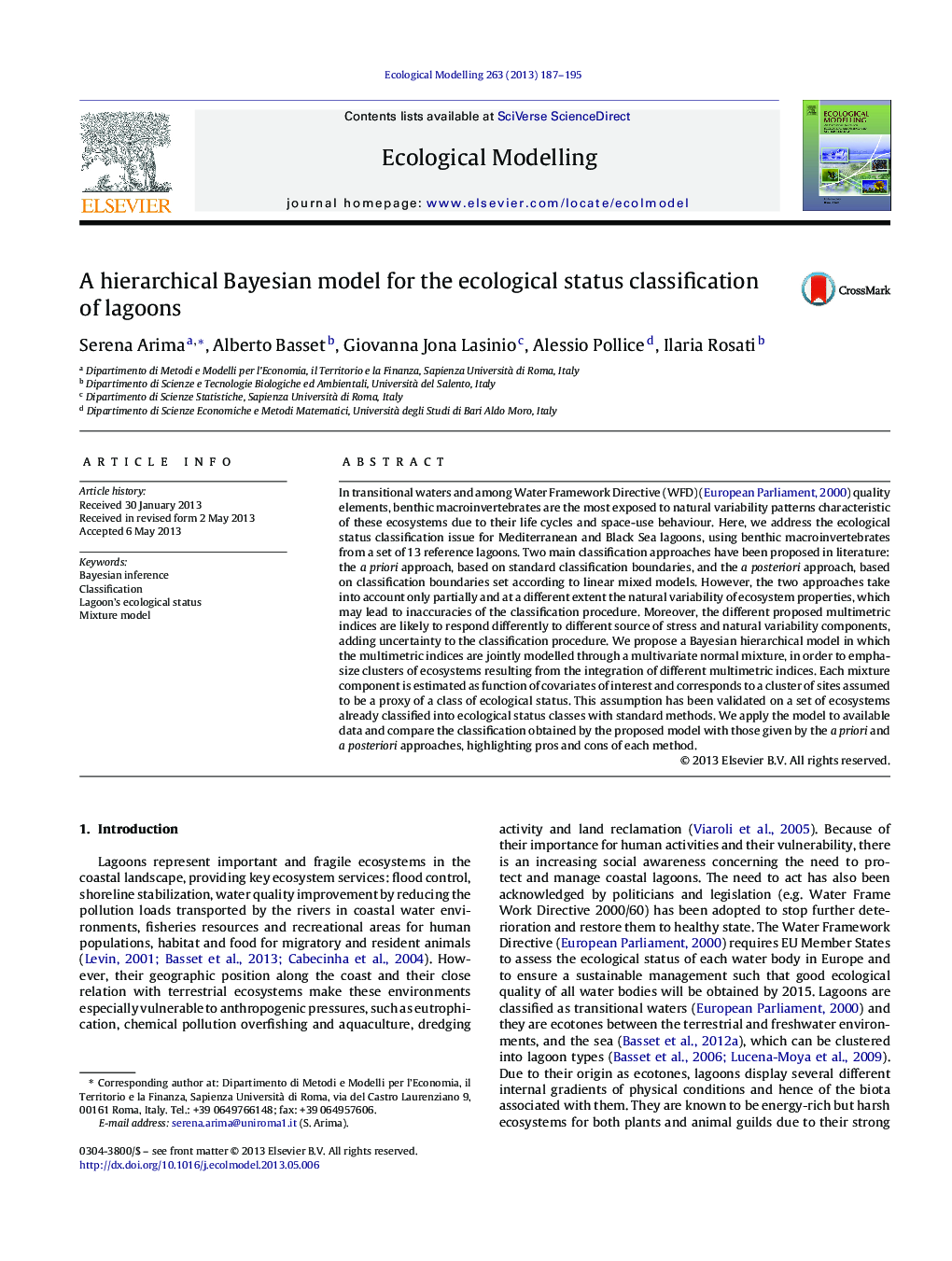| کد مقاله | کد نشریه | سال انتشار | مقاله انگلیسی | نسخه تمام متن |
|---|---|---|---|---|
| 6297183 | 1617483 | 2013 | 9 صفحه PDF | دانلود رایگان |
عنوان انگلیسی مقاله ISI
A hierarchical Bayesian model for the ecological status classification of lagoons
ترجمه فارسی عنوان
یک مدل بیزی سلسله مراتبی برای طبقه بندی وضعیت اکولوژیکی تالاب ها
دانلود مقاله + سفارش ترجمه
دانلود مقاله ISI انگلیسی
رایگان برای ایرانیان
کلمات کلیدی
استنتاج بیزی، طبقه بندی، وضعیت زیست محیطی لگو، مدل مخلوط،
موضوعات مرتبط
علوم زیستی و بیوفناوری
علوم کشاورزی و بیولوژیک
بوم شناسی، تکامل، رفتار و سامانه شناسی
چکیده انگلیسی
In transitional waters and among Water Framework Directive (WFD) (European Parliament, 2000) quality elements, benthic macroinvertebrates are the most exposed to natural variability patterns characteristic of these ecosystems due to their life cycles and space-use behaviour. Here, we address the ecological status classification issue for Mediterranean and Black Sea lagoons, using benthic macroinvertebrates from a set of 13 reference lagoons. Two main classification approaches have been proposed in literature: the a priori approach, based on standard classification boundaries, and the a posteriori approach, based on classification boundaries set according to linear mixed models. However, the two approaches take into account only partially and at a different extent the natural variability of ecosystem properties, which may lead to inaccuracies of the classification procedure. Moreover, the different proposed multimetric indices are likely to respond differently to different source of stress and natural variability components, adding uncertainty to the classification procedure. We propose a Bayesian hierarchical model in which the multimetric indices are jointly modelled through a multivariate normal mixture, in order to emphasize clusters of ecosystems resulting from the integration of different multimetric indices. Each mixture component is estimated as function of covariates of interest and corresponds to a cluster of sites assumed to be a proxy of a class of ecological status. This assumption has been validated on a set of ecosystems already classified into ecological status classes with standard methods. We apply the model to available data and compare the classification obtained by the proposed model with those given by the a priori and a posteriori approaches, highlighting pros and cons of each method.
ناشر
Database: Elsevier - ScienceDirect (ساینس دایرکت)
Journal: Ecological Modelling - Volume 263, 10 August 2013, Pages 187-195
Journal: Ecological Modelling - Volume 263, 10 August 2013, Pages 187-195
نویسندگان
Serena Arima, Alberto Basset, Giovanna Jona Lasinio, Alessio Pollice, Ilaria Rosati,
